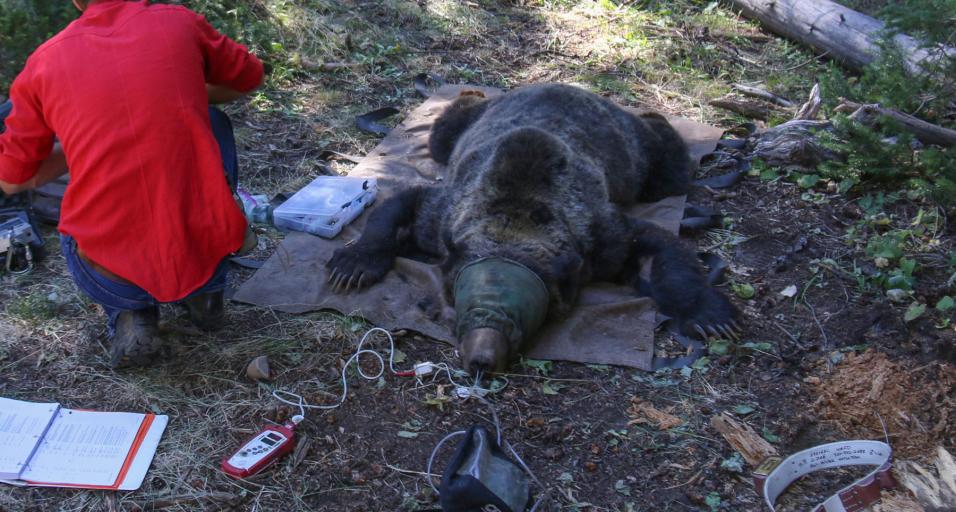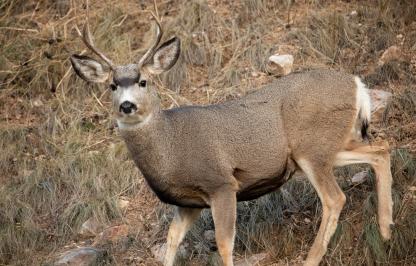As part of ongoing efforts to monitor the population of grizzly bears in the Greater Yellowstone Ecosystem, Large Carnivore Biologists with the Wyoming Game and Fish Department conducted their annual grizzly bear capture operations to collar bears in areas of northwest Wyoming this summer. A total of 18 individual grizzly bears were captured this summer, 12 north and west of Dubois and another six north of Jackson.
In the Jackson Region, from July 27-August 21, six different grizzly bears were captured southeast of Moran Junction, with five bears being collared. A sub-adult male bear was tagged and biological samples were taken, but not radio-collared due to its smaller size. Two black bears were captured and released unhandled.
Information from collared grizzly bears provides data on survival, reproduction, distribution, habitat use and movements of grizzly bears. When captured, animals are collared, released on site and monitored in accordance with strict guidelines developed jointly by the Wyoming Game and Fish Department and the Interagency Grizzly Bear Study Team.
In addition, each summer Game and Fish biologists, along with personnel from other Interagency Grizzly Bear Study Team member agencies, conduct grizzly bear observation flights to document grizzly bear numbers, distribution and reproduction. These regular bear observation flights have been conducted in the Greater Yellowstone Area since the 1990s.
The annual monitoring of this population is vital to the ongoing management and conservation of grizzly bears in Wyoming. Information obtained through these efforts is used to assess the status and health of grizzly bears in the ecosystem and provides insight into population dynamics critical to demonstrate the continued recovery of the Greater Yellowstone population.
G&F Conducts Grizzly Bear Collaring Effort Near Moran
Mark Gocke, Public Information Specialist, 307-249-5811




